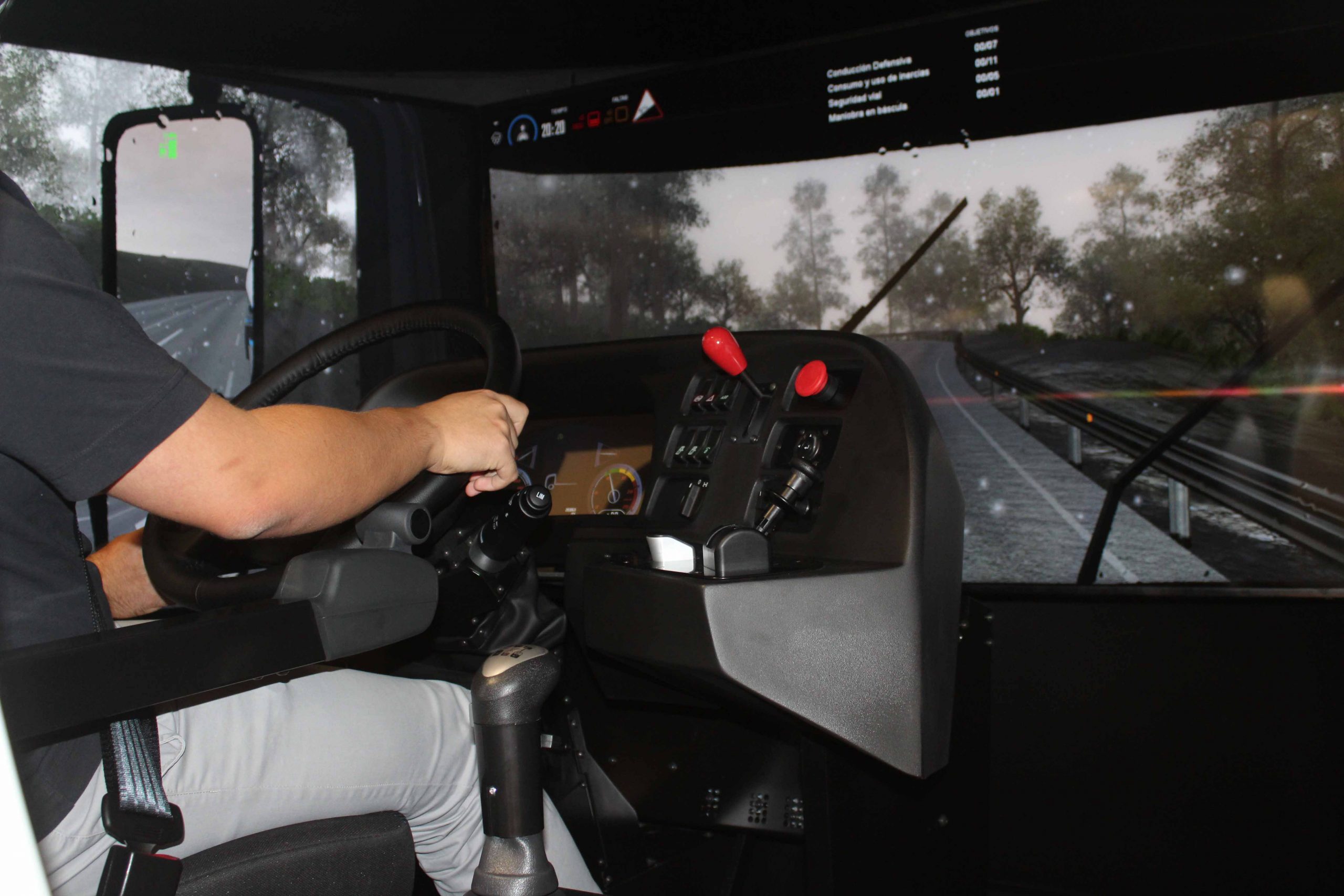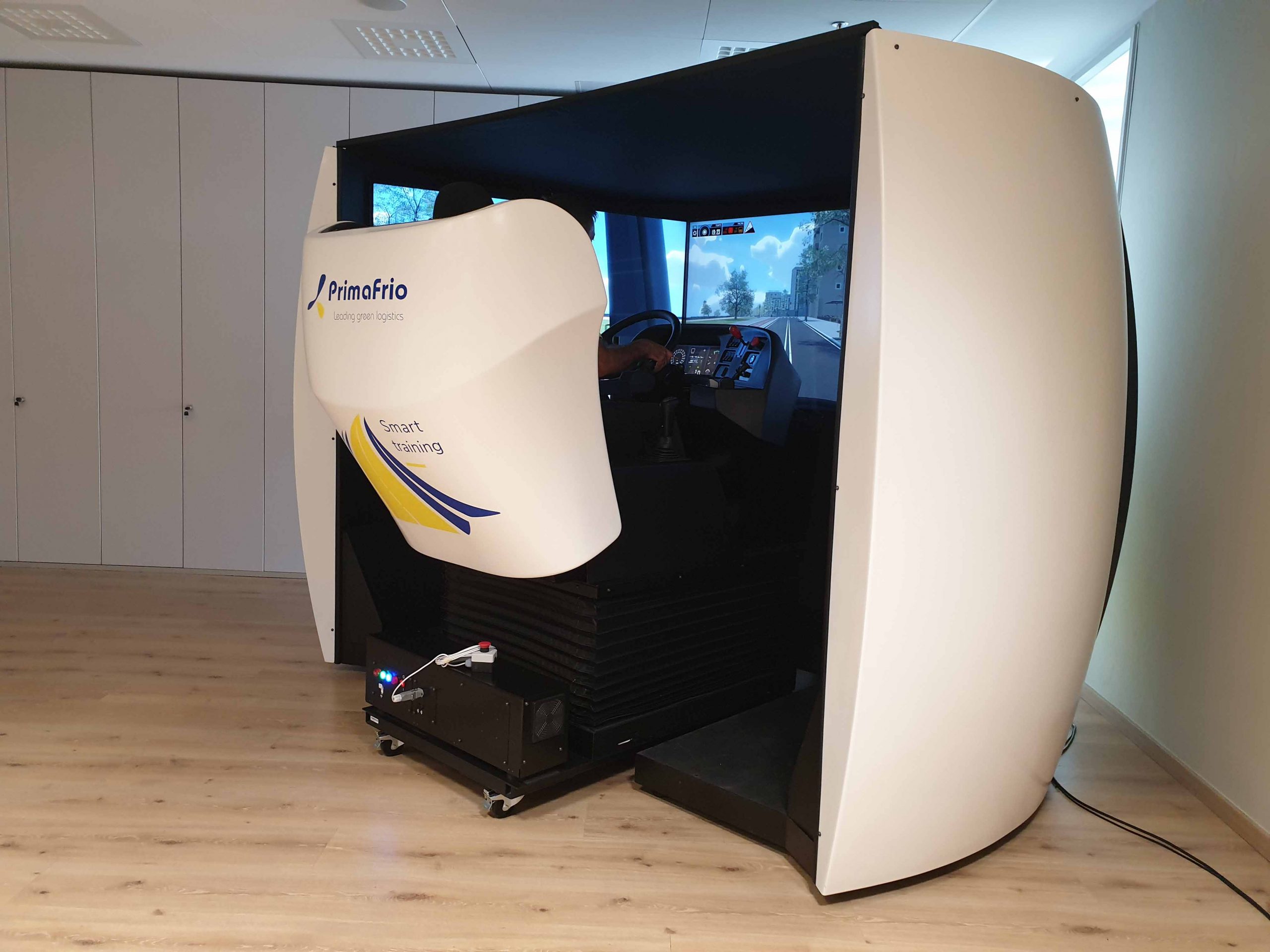Primafrio develops a virtual driving simulator for its Efficient Driving and Training Programme
Primafrio, Europe’s leading operator of logistics and road transport of fruit and vegetable products at controlled temperatures, has developed a high-level virtual driving simulator for training its drivers.
To this end, it has an ambitious strategic plan featuring actions aimed at boosting corporate social responsibility, and implementing new technological developments as a guarantor of improving working conditions and social welfare. This is what has allowed Primafrio to position itself among the top-6 companies in the logistics and transport sector with the best ESG rating worldwide.
Part of the training programme at Primafrio in collaboration with technological partner Simumak, this virtual driving simulator resembles the environment and driving conditions of a heavy vehicle and exposes trainees to the risks and circumstances that both professional and novice drivers normally face. Thus, it is possible to optimise skills in two fundamental aspects: road safety and efficient driving.
The project is the fruit of work carried out over two and a half years by the R+D+i and Efficient Driving departments, which consider decision-making as a key aspect in driving and accident prevention.
In an immersive environment, situations close to reality are simulated that contribute to learning through awareness, prevention and safety in a controlled environment, obtaining maximum performance of time and space. Likewise, it is possible to measure the performance of a driver, since after each session there is access to a large number of metrics that report the results of the test, data that is analyzed by the team of experts in efficient driving and road safety at Primafrio Group.
The use of a virtual simulator allows Grupo Primafrio to cut emissions by 150 tons of carbon dioxide (CO2) and greenhouse gases (GHG) per year, reduce vehicle maintenance and save almost 35,000 litres of fuel. As a result, its carbon footprint is reduced by 18% and the accident rate by 35%.





